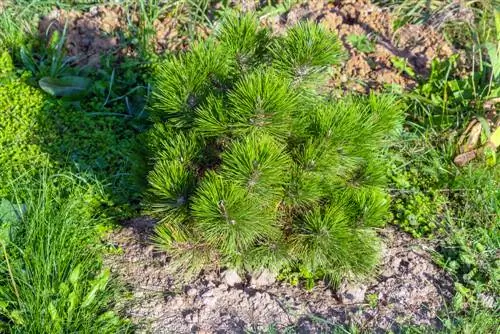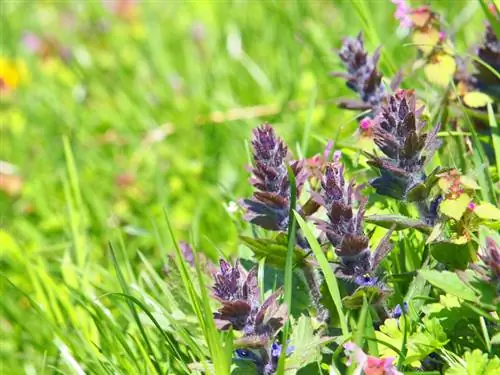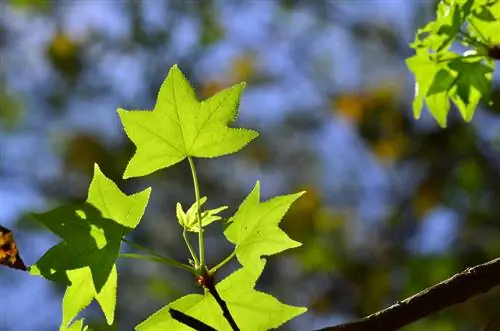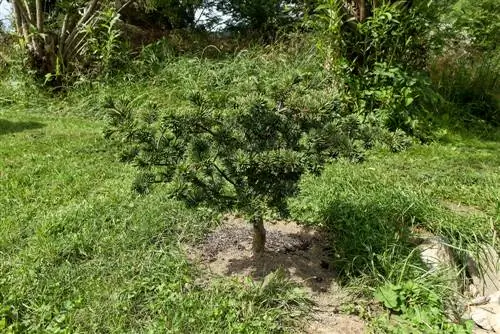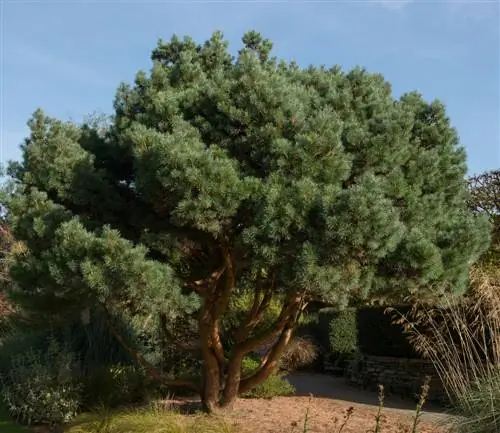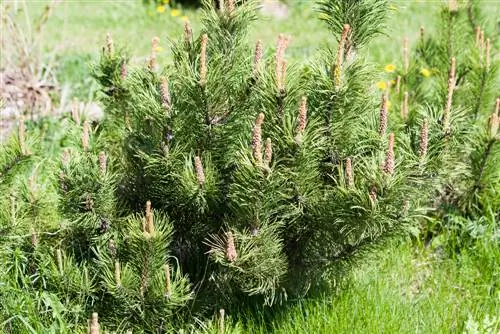- Author admin [email protected].
- Public 2023-12-16 16:46.
- Last modified 2025-01-23 11:21.
Do you always fall for the intoxicating scent of wet earth and fresh pine needles on a walk in the forest? There is nothing more beautiful than closing your eyes in the middle of the trees and listening to the sound of the wind as it blows gently through the pine treetops. With a pine tree in your own garden, you can enjoy this feeling every day. To ensure your jaw grows he althily, you should follow the following tips.
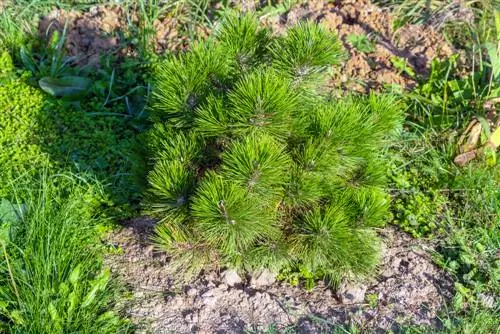
How do I properly care for a pine tree in the garden?
In order to properly care for a pine tree in the garden, you should pay attention to the location, watering, fertilization and pruning. Ideally, the pine tree should be in a sunny location with well-drained soil. Keep the substrate slightly moist, fertilize every two weeks and prune the pine on dry, cloudy days.
Different pine species
Not all pine trees are the same. When purchasing from the nursery you can choose between different species:
- native pines (mountain pine, Austrian black pine, stone pine, Scots pine)
- exotic pines (breast pine, lodgepole pine, snakeskin pine, Japanese red pine, weeping pine, black pine, white pine)
- small pines (creeping pine, conical mountain pine, winter yellow dwarf mountain pine, ball pine)
The choice of location
The pine is a so-called pioneer tree. This means that it adapts easily to weather and soil conditions. In the wild, the deciduous tree occurs even in the most hostile places to vegetation. For this reason, a pine tree is suitable for almost every garden. It thrives in shade and dry soil and is completely hardy. Nevertheless, pines love sunny locations with a permeable substrate in which waterlogging does not form. These conditions significantly promote the growth of your conifer.
Care tips
Pouring
A pine tree can tolerate longer dry periods, but it is advisable to always keep the substrate slightly moist. What the conifer cannot tolerate, however, is waterlogging. This is why permeable soil is so valuable when choosing a location. If you keep your pine as a container plant on the terrace, drainage will help against the threat of root rot.
Fertilize
In particular, you should fertilize bonsai pines on the terrace every two weeks with simple bonsai liquid fertilizer (€4.00 on Amazon). It is only during the budding period that additional nutrients are not recommended. If your pine tree develops brown needles in the soil, Epsom s alt will help compensate for an avoidable deficiency or poor soil conditions.
Cutting
Since pine crowns spread widely with age, regular pruning makes sense so that the conifer does not grow too close to buildings. This can be strong.
- cut your pine on a dry, cloudy day
- shorten the candles to one to two thirds
- remove all brown and old branches
Protection against pests and diseases
Many insects that settle on the pine tree are initially harmless. If you still find them annoying, simple and gentle applications with neem or rapeseed oil can help.

